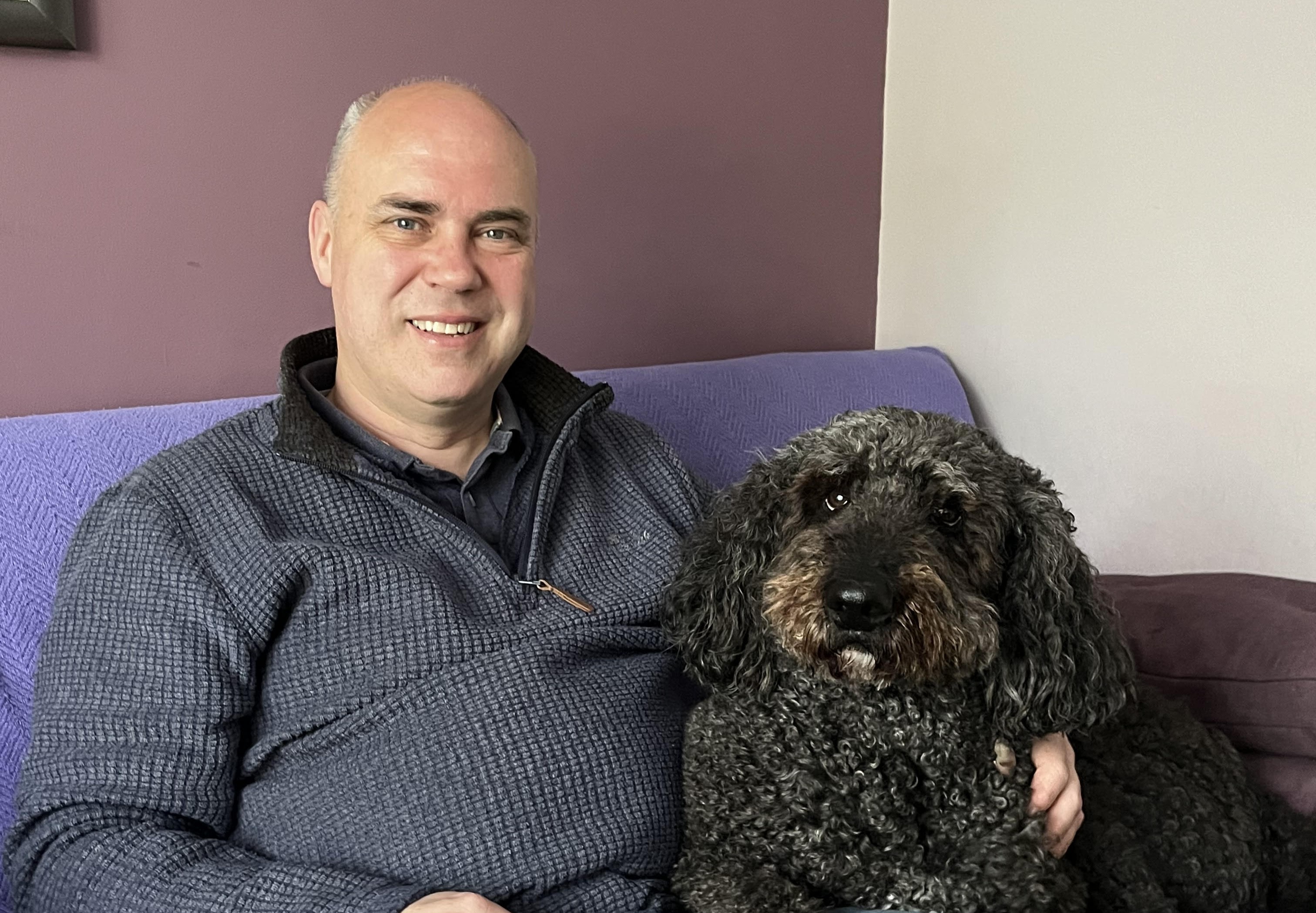'My pension forecast scared the life out of me – here's what I'd tell my younger self'
After spending years neglecting his provisions for retirement, a worrying look into the future prompted a pension saver to take action

When John Middleton’s financial adviser told him in no uncertain terms that at the age of 34, his pension pot of £7,000 was nowhere near where it should be, it was the wake-up call he needed.
“It scared the life out of me,” said John, a project manager from Gloucester. “Her warning portrayed this mental image of us scrabbling around looking for where the next meal was coming from in our dotage.”
Determined to build up a secure and comfortable retirement for his family, John was spurred into action.
MoneyWeek
Subscribe to MoneyWeek today and get your first six magazine issues absolutely FREE

Sign up to Money Morning
Don't miss the latest investment and personal finances news, market analysis, plus money-saving tips with our free twice-daily newsletter
Don't miss the latest investment and personal finances news, market analysis, plus money-saving tips with our free twice-daily newsletter
Now, aged 53, John has amassed pension savings of £420,000 in a self-invested personal pension (SIPP).
We look at how he did it, and the lessons he's learnt.
1. Starting meaningful pension contributions
One of the first companies John worked for didn’t offer a pension scheme. In his twenties and saving for a first home with his then-fiancée Julie, thoughts of retirement and setting up a private pension just weren’t a priority.
When he did finally join a company with a pension scheme, John and his wife Julie were expecting their first child, so he paid in the minimum amount to trigger a contribution from his employer.
“We put whatever money we got into life,” he said.
“But if there’s one thing my current self could go back and say to my younger self, it would be to stick £50 or £100 a month into your pension – the power of compounding will blow your mind and you won’t miss it.”
The frank conversation with the financial adviser, however, had put things into perspective.
At the time, the couple had had their second child and were paying out £500 a month in nursery fees. When the children started school in 2010, John diverted the cash into his pension, which was matched by his firm – marking the start of a serious attitude to saving.
We look at the average pension pot by age in a separate article.
2. Growing confidence as an investor
Having witnessed the dot-com bubble and subsequent crash of the early 2000s, which sent the inflated price of technology shares tumbling, John admits he was scared of the stock market for years after.
But when a number of colleagues began to open ISAs some years later, John came around to the idea of investing. Keen to understand more about the stock market and build his confidence, he began to read up about investing and put small amounts of cash into standard FTSE 100 shares, unit trust funds and investment trusts.
He didn’t know it at the time, but the ISA was the training ground for his future SIPP investments.
Then in 2014, John decided to put his retirement savings to date under the microscope.
Using an Excel spreadsheet, he began to work out what his income might look like when he was 60, 65 and 70 years old. “I wrote it all down so I had some sort of frame of reference to start thinking about what I can do to close the gap.”
When he saw his projected earnings, it was the first time John realised the extent of the cautious nature of his company pension.
3. Ditching the default company pension for a SIPP
After a decade of saving £70,000, the total of both his own and his employer’s contributions, plus tax relief, into his company’s default pension scheme – the lowest risk scheme offered by the provider – his pot had grown by 20% to £84,000.
“I looked at the forecasts for my pension, the safest one, and compared it to the performance of the medium risk and adventurous one and the differences were unbelievably huge.
“What I didn’t get was that the burden of the decision was solely with me; none of these companies are going to say, ‘Hey, you should do this’.”
Over 90% of employees who join their workplace pension stay in the provider’s default fund, says Rachel Vahey, head of public policy at investment platform AJ Bell.
“The default investment fund is designed to fit the needs of thousands of people, so it often takes a cautious approach,” she added.
“If you are happy taking on a bit more risk for some potential reward, then consider the other investments on offer from the workplace pension. Or, you can set up a SIPP to accept any additional contributions as well as consolidate your old pensions into it.”
A SIPP offers a wider choice of investments for you to choose from.
John transferred the whole value of his company pension into a SIPP and decided to take a hands-on approach to growing his retirement savings.
He started by looking at the top 10 funds and shares other users of his SIPP platform had invested in, displayed on the platform’s website, and invested a portion of his portfolio in each.
Using specialist websites such as Morningstar and Trustnet, he monitored his investments’ performance and looked at their fund rankings for more inspiration.
Following the collapse of star fund manager Neil Woodford’s Equity Income fund in 2019, John turned his back on “rockstar fund managers” and looked at the areas of the world or sectors that were performing well and chose big passive funds tracking those markets, choosing to invest up to 4% of his pot in each, which he planned to review after five years.
The United States was one of John’s favoured countries, but he has since become frustrated with president Trump’s administration and has begun pulling money out of the US stock market and redirecting his money into Europe, the UK, Japan and South East Asia outside of China.
By the time John transferred his SIPP to a cheaper provider in 2024, the value of his pot had reached £400,000.
4. Using salary and a redundancy pay out
Shrewd investment choices alone didn’t lead to the 376% rise in the value of his pension since transferring the money into a SIPP 10 years ago. Several smart decisions to inject cash sums into his pot when the opportunity arose accelerated its growth.
Despite moving his savings from the company pension to a SIPP, John still wanted to take advantage of the free contributions his employer would make if he paid into its scheme.
He began receiving bonuses and was told by his firm that if he used the cash to make Additional Voluntary Contributions (AVCs) of up to £5,000 per bonus, it would inject a further £1,000 into his pot. He also agreed to a small salary sacrifice payment of around £75 a month, in addition to his regular contributions from his net pay.
Periodically, John would transfer the company pension savings over to his SIPP.
The event that had the most significant impact on the value of his pension, however, was receiving a redundancy payout.
“The redundancy package of £70,000 was very good and to go with it, they paid for me to have some good financial advice,” he said. “The adviser explained how I could maximise my redundancy and take advantage of pension contribution allowances.”
The biggest lessons on the pension journey
John has always kept track of his pension pots when he has moved to a new company by transferring the sums into his SIPP, which Vahey says is a smart way of keeping an eye on your pension progress.
“Having one pot – as well as your workplace pension – means you can see how much money you could have built up by retirement,” she added. “This allows you to determine how much more you need to save to keep on track to meet your retirement objectives.”
John says he did not ever imagine he would end up with a private pension which is now worth £420,000.
He says his biggest lesson was using his redundancy wisely.
“I can’t emphasise enough the impact investing my redundancy package has had on the value of my pension, it’s probably doubled its value.
“If you’re being paid redundant and you don’t need the money for something immediate, give some serious thought to investing it for the future.”
Get the latest financial news, insights and expert analysis from our award-winning MoneyWeek team, to help you understand what really matters when it comes to your finances.
Samantha Partington is an award-winning freelance journalist writing about property, mortgages, personal finance and interiors.
Before going freelance she wrote for the Daily Mail's personal finance section and prior to that she was the residential correspondent for real estate business title Property Week. She was also the former deputy editor of trade title Mortgage Solutions.
Before becoming a journalist, Samantha worked as a mortgage broker and is CeMAP qualified. Follow her on Twitter @SamJPartington1.
-
 The most influential people of 2025
The most influential people of 2025Here are the most influential people of 2025, from New York's mayor-elect Zohran Mamdani to Japan’s Iron Lady Sanae Takaichi
-
 Millions of parents are missing out on up to £720 a year in extra pension cash – are you affected?
Millions of parents are missing out on up to £720 a year in extra pension cash – are you affected?A mum who narrowly missed out on the pension boost said she “never knew the government rule existed” and wants other parents to use it